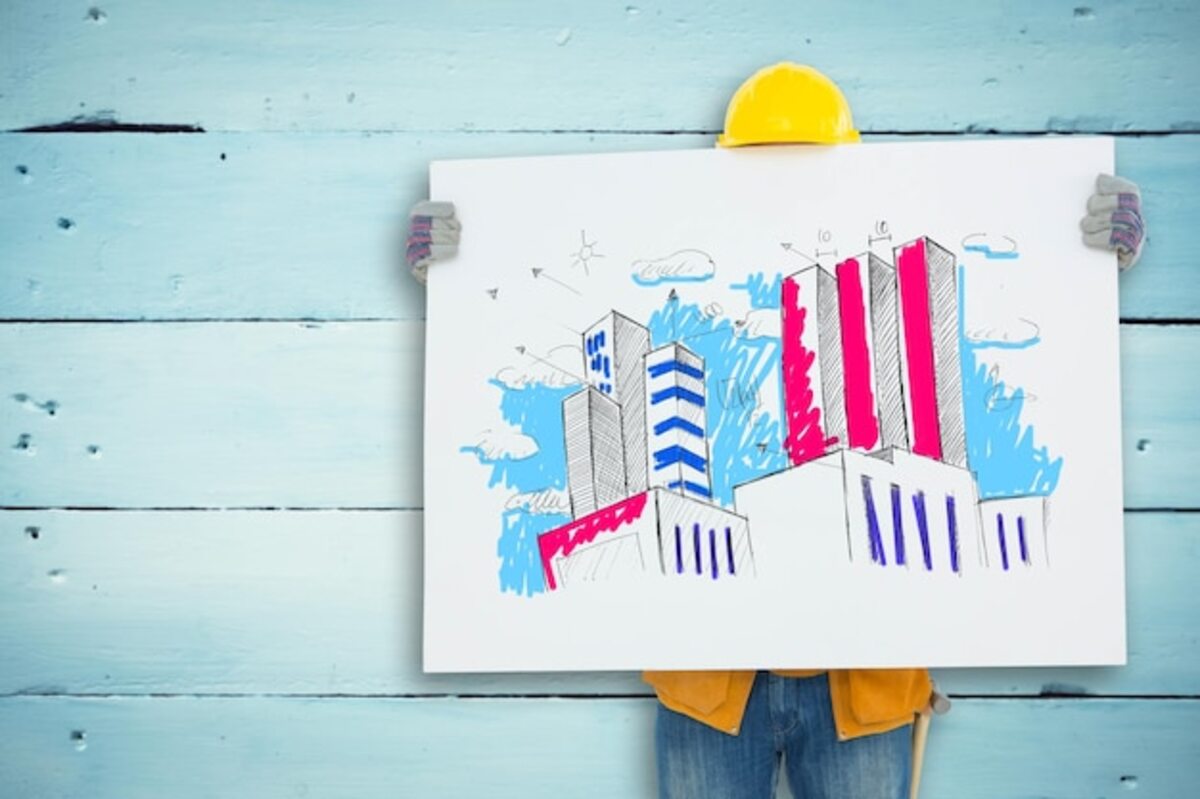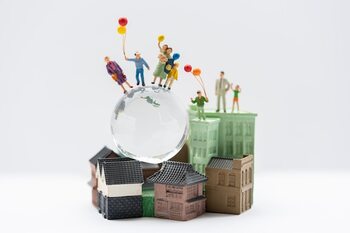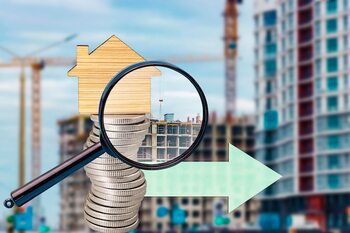The impact of urban art on property valuation

Urban art has emerged as a powerful catalyst in property valuation, transforming public and private spaces into authentic open-air galleries. This phenomenon not only beautifies Costa Rican cities but also significantly influences the appreciation of nearby properties. In this article, we will explore how urban art can be a determining factor in increasing the value of real estate and attracting both buyers and investors interested in vibrant and creative locations.
The connection between urban art and community development
Urban art not only beautifies the environment but also acts as a driver of community development. Artistic interventions in public spaces encourage active participation from residents, who engage in the planning and execution of murals and artistic projects. This collaboration between artists and community members strengthens social ties, creating a sense of belonging that is crucial for the sustainable development of any neighborhood. As communities come together around art, an atmosphere conducive to dialogue and cooperation is generated, which in turn can attract new residents and businesses.
Moreover, the impact of urban art transcends aesthetics; it contributes to local economic growth. By transforming neglected areas into vibrant and attractive spaces, tourism is encouraged and the local economy is stimulated through the creation of cultural events that attract visitors. This not only increases the flow of people in the vicinity but also elevates the demand for residential and commercial properties. Thus, investments in artistic projects can be seen as an effective strategy to revitalize entire neighborhoods, boosting both their real estate value and social vitality.
Urban art: a passing trend or a smart investment?
Urban art has sparked a passionate debate about its permanence and relevance over time. Many critics view it as a passing trend, arguing that the ephemeral nature of artistic trends can lead to saturation that could eventually diminish the value of the works. However, this perception ignores the lasting impact that urban art can have on the cultural and social identity of a community. Well-executed artistic interventions not only beautify spaces but also foster a sense of belonging and pride among residents, elements that significantly contribute to the appeal of a property.
On the other hand, investing in urban art is becoming a smart strategy for property owners and investors. By partnering with local artists or promoting murals in specific areas, it is possible not only to enhance the neighborhood's aesthetics but also to attract a broader audience, including tourists and art lovers. This influx can translate into a noticeable increase in foot traffic and commercial interest, which is often favorable for the appreciation of nearby properties. Thus, urban art emerges as a viable opportunity to transform forgotten spaces into vibrant destinations, highlighting its potential not only as an artistic phenomenon but also as a long-term strategic investment.
3. Success stories: cities where art has increased property value
Cities that have effectively integrated urban art into their urban fabric often experience a notable increase in the value of their properties. A prominent example is Berlin, where murals and graffiti have become an essential part of the urban landscape. Neighborhoods like Kreuzberg and Friedrichshain not only attract tourists for their cultural offerings but have also seen a significant rise in housing prices. The presence of street art has transformed these areas into focal points for young professionals and creatives, generating a dynamic environment that drives real estate investment.
Another successful case can be found in Wynwood, Miami, known for its vibrant street art district. This neighborhood was once a forgotten industrial area, but thanks to the initiative of local artists and developers, it has transformed into an internationally recognized artistic destination. The previously empty spaces now feature colorful murals that attract both visitors and new residents. As a result, property values have grown exponentially, making Wynwood one of the most sought-after places to live and invest in the city. This metamorphosis demonstrates how art can be a powerful economic engine by elevating not only the visual appeal but also the appreciation of the surrounding area.
4. Impact of urban art on the perception of the neighborhood
Urban art has a profound impact on the perception of the neighborhood, as it transforms spaces that may have previously been considered marginal or neglected into vibrant and attractive places. The artworks, whether murals, installations, or sculptures, bring a unique identity to each community, generating a sense of belonging among residents and fostering local pride. This change in the aesthetics of the environment not only enhances the visual quality of the streets but also invites more visitors and curious onlookers to explore the area, creating a dynamic atmosphere that can be very beneficial for local businesses.
Additionally, urban art acts as a bridge between diverse communities and cultural identities, promoting inclusion and social dialogue. As more artists settle in specific neighborhoods to express their creativity, these spaces become meeting points where cultural events and community activities are celebrated. This social revitalization not only improves cohesion among neighborhood residents but also attracts potential buyers and investors looking for properties in areas with a strong sense of community and cultural activity. In this sense, the impact of urban art transcends the aesthetic; it becomes a key tool for the economic and social revaluation of neighborhoods.
5. How art transforms forgotten spaces into attractive destinations
Art has the unique ability to revive and revitalize spaces that might otherwise go unnoticed or be considered forgotten. In many cities, gray walls and neglected places are transformed into vibrant canvases where local artists express their creativity. This process not only beautifies the environment but also attracts visitors and residents alike, turning these areas into cultural destinations that invite social interaction and discovery. By bringing life to these forgotten spaces, urban art becomes a magnet for public attention and, as a result, potentially increases the value of surrounding properties.
In addition to its aesthetic function, urban art can serve as a strategic tool to foster the economic development of a community. Murals and artistic installations can attract entrepreneurs who see opportunities in previously overlooked areas. Cafés, galleries, and boutiques begin to flourish around these new creative focal points, which not only improves local quality of life but also drives up real estate market prices. Thus, transforming forgotten spaces through art is not just a cultural act; it is a smart investment that can be very beneficial for both owners and developers interested in maximizing their return on investment.
6. The role of local artists in property valuation
Urban art is not only a means of creative expression, but it has also become a key element for property valuation, thanks to the active participation of local artists. These creators bring their unique vision and cultural sensitivity to urban spaces, transforming walls and facades into masterpieces that reflect the identity of the environment. By involving local artists, communities not only beautify their neighborhoods but also generate a sense of belonging and pride among their residents, which can make properties in the area more attractive to potential buyers or tenants.
Additionally, the work of local artists can attract media and tourist attention to a specific area, further enhancing its commercial appeal. Events like urban art festivals or temporary exhibitions often draw large crowds, turning previously forgotten areas into hotspots of social and economic activity. This visibility not only benefits local businesses but also elevates the value of surrounding properties by positioning them within a dynamic and culturally vibrant context. In this sense, local artists play a crucial role as transformative agents driving urban revitalization and contributing to the sustainable growth of the real estate market.
7. Strategies to integrate urban art into real estate projects
The integration of urban art in real estate projects not only beautifies the environment but also creates a sense of community and belonging. To achieve this, it is essential to collaborate with local artists who understand the culture and lifestyle of the area. These talents can contribute murals, installations, or artistic interventions that reflect the identity of the neighborhood. Additionally, by including spaces designated for temporary exhibitions or cultural events within the development, community participation is encouraged, attracting a larger number of visitors, which can result in an increase in demand for the surrounding properties.
Another effective strategy is to design common spaces in a way that incorporates artistic elements from their conception. This can include vertical gardens, interactive sculptures, or relaxation areas decorated with mural art. By doing so, a visually appealing experience is created for both residents and visitors. Additionally, it is important to communicate the added value that urban art brings to the project through appropriate marketing campaigns; highlighting how these initiatives contribute to enhancing the quality of life and fostering a dynamic environment can attract both buyers and tenants interested in living in vibrant and creative settings.
8. The influence of cultural tourism on the increase in property prices
Cultural tourism, largely driven by the appeal of urban art, has proven to be a significant engine in the increase of property prices. As more visitors are drawn to the aesthetic richness and creativity offered by cities, the interest in investing in areas close to these artistic manifestations grows. This phenomenon not only benefits current homeowners, who may see an increase in demand for rentals and sales, but also incites new real estate developments seeking to capitalize on this emerging trend. Properties located in neighborhoods where urban art flourishes tend to attract a diverse and vibrant audience, which elevates their profile and value in the market.
Moreover, the interrelation between cultural tourism and property valuation can be observed in how urban spaces are reconfigured. Communities that embrace urban art often experience an economic revitalization that goes beyond mere beautification; it fosters an ecosystem where local businesses thrive due to the constant influx of tourists. This synergy creates a virtuous cycle: as tourist visits increase and commercial activity rises, nearby properties become even more desirable assets for buyers and investors. The perception of these places as vibrant cultural hubs thus contributes to a sustained appreciation of real estate value, making cultural tourism a key factor in the contemporary valuation of properties.
9. Challenges and opportunities of urban art in residential areas
Urban art in residential areas presents a duality between challenges and opportunities. On one hand, the incorporation of murals and other artistic expressions can generate resistance among residents who value aesthetic uniformity and order in their neighborhoods. Some communities may perceive these interventions as a threat to their identity or as a focal point for undesirable activities. However, when implemented with active participation from neighbors and selecting local artists who reflect the culture of the place, urban art can become a cohesive element that strengthens community ties and fosters a sense of belonging.
On the other hand, the opportunities offered by urban art are significant. The presence of creative works can revitalize forgotten neighborhoods, attracting both new residents and local businesses. Properties near areas where artistic interventions have taken place often see an increase in their valuation due to the added aesthetic and cultural appeal. Additionally, community events around urban art can boost local tourism and increase the visibility of the area, thus creating a positive cycle that benefits both property owners and tenants. In summary, while there are challenges that need to be carefully addressed, the opportunities to improve quality of life and increase real estate value are undeniable.
10. Future perspectives: sustainability and evolution of urban art
Sustainability is becoming a fundamental pillar in the evolution of urban art, just like in many other areas of contemporary life. Artists and communities are increasingly interested in using recycled materials and eco-friendly techniques, which not only minimizes environmental impact but also adds a layer of meaning to the works. This sustainable approach can attract a broader, environmentally conscious audience, as well as increase the value of nearby properties by associating them with a responsible cultural movement aligned with current challenges.
As urban art continues to evolve, so does its role in property valuation. Community initiatives that promote murals and artistic installations can be seen as strategic investments by developers and investors. These actions not only beautify public spaces but also create a unique identity for neighborhoods, fostering a sense of belonging and social cohesion. With the rise of cultural tourism and the constant quest for authentic experiences by visitors, urban art is likely to remain a key factor in increasing the value of properties in vibrant urban environments.



